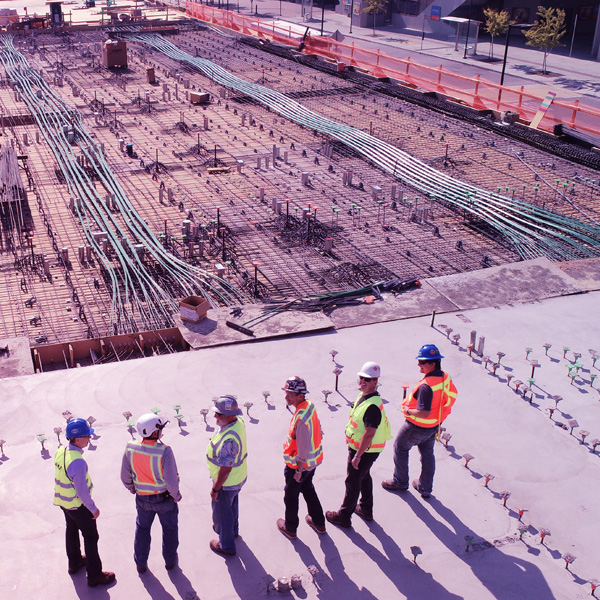Staying ahead with changes in the construction industry isn’t easy, particularly when you’re trying to keep up with ever-evolving regulations like the Construction Industry Scheme (CIS). Whether you’re a contractor or subcontractor, ensuring CIS compliance isn’t just a box to check, it’s a fundamental aspect of maintaining industry credibility and avoiding penalties.
Our essential manual on mastering CIS compliance will provide you with a road map to navigate this complicated terrain with ease, saving time, energy, and potential legal repercussions down the line.
Understanding CIS Compliance
The Construction Industry Scheme (CIS) is a tax deduction scheme which involves tax being deducted at source from payments relating to construction work. The scheme is operated by contractors and subcontractors within the UK’s construction industry. It is designed to minimise tax evasion by ensuring that payments made by contractors to subcontractors for construction work are made after tax deductions.
In other words, CIS is a way for HM Revenue & Customs (HMRC) to maintain control over the payments made between contractors and subcontractors, ensuring that tax is collected throughout the process. The scheme applies to all payments made by contractors to subcontractors, unless the subcontractor has gross payment status.
Understanding CIS compliance involves knowing who is considered a CIS contractor or subcontractor, what construction work is covered under CIS, how and when to make CIS deductions, how to report to HMRC and the penalties for non-compliance. Mastering these areas is vital to ensure you meet your CIS obligations and avoid any potential penalties.
Importance of CIS Compliance for Contractors and Subcontractors
CIS compliance is not just a legal obligation but also a vital aspect of maintaining business credibility in the construction industry. Non-compliance can lead to heavy penalties from HMRC, including fines and potential prosecution. It can also damage a contractor’s or subcontractor’s reputation, potentially leading to loss of business.
Moreover, compliance with the CIS improves the transparency of transactions within the industry, making it easier for businesses to account for their income and expenditure. This, in turn, simplifies the process of filing tax returns and reduces the risk of errors or discrepancies in financial records.
Beyond the legal and financial implications, complying with the CIS also promotes ethical business practices. It ensures that contractors and subcontractors are paying the right amount of tax, contributing to the public purse and supporting the provision of public services.
Key Elements of CIS Compliance
There are several key elements of CIS compliance that contractors and subcontractors must understand and adhere to. Firstly, contractors must register for the CIS before they take on their first subcontractor. This involves contacting HMRC and providing some basic information about the business.
Once registered, the contractor has to verify the subcontractor with HMRC before they can be paid for their work. This involves confirming the subcontractor’s identity and their CIS status. If the subcontractor is registered for the CIS, then the contractor can pay them in accordance with the CIS rules.
Contractors are also required to make deductions from the subcontractor’s payments. The deduction rate is usually 20%, but it can be 30% if the subcontractor is not registered for the CIS. Once the deductions have been made, the contractor must provide the subcontractor with a payment and deduction statement.
How to Achieve CIS Compliance: A Step-by-Step Guide
Achieving CIS compliance involves a series of steps that must be followed meticulously.
Step one: Is to register as a contractor or subcontractor under the CIS with HMRC. This involves providing your unique taxpayer reference (UTR), National Insurance number, and business details.
Step two: Is to verify your subcontractors with HMRC. This involves providing HMRC with the subcontractor’s UTR and National Insurance number. HMRC will then tell you whether the subcontractor is registered for the CIS, and what deductions should be made from their payments.
Step three: is to make the correct deductions from your subcontractors’ payments. The standard deduction rate is 20%, but it can be 30% if the subcontractor is not registered for the CIS.
Common Challenges in CIS Compliance and How to Overcome Them
Despite the clear guidelines provided by HMRC, many contractors and subcontractors encounter challenges in achieving and maintaining CIS compliance. One common challenge is the complexity of the rules and regulations surrounding the CIS, which can be confusing and difficult to navigate.
Another common challenge is the administrative burden of CIS compliance. This includes the tasks of registering for the scheme, verifying subcontractors, making deductions, issuing payment and deduction statements, and reporting to HMRC. These tasks can be time-consuming and can detract from the core business activities of the contractor or subcontractor.
To overcome these challenges, contractors and subcontractors should consider seeking professional advice and assistance. At FiguresUK we are experts when it comes to CIS compliance and can help you to navigate the complexities of it. We ensure that all obligations are met and minimise your workload and the risk of non-compliance penalties.
Tools and Resources for Managing CIS Compliance
There are also various tools and resources available to help contractors and subcontractors manage their CIS compliance. These include software applications that can automate many of the administrative tasks involved in CIS compliance, such as verifying subcontractors, calculating deductions, and generating payment and deduction statements.
In addition to software tools, there are also numerous online resources that provide guidance on CIS compliance. These include the official guidance provided by HMRC, as well as a wealth of information provided by professional bodies, industry associations, and specialist websites.
Contractors and subcontractors should take advantage of these tools and resources to ensure that they understand their obligations under the CIS, and to help them manage their compliance in an efficient and effective manner.
Professional CIS Compliance Services
For those contractors and subcontractors who require further assistance with CIS compliance, there are professional services available, such as us at FiguresUK. These services provide expert advice and support on all aspects of CIS compliance, from understanding the rules and regulations, to managing the administrative tasks, to dealing with any issues that may arise.
Our professional CIS compliance services can provide peace of mind for contractors and subcontractors, knowing that their CIS obligations are being managed by experts. It can also save time and effort, allowing contractors and subcontractors to focus on their core business activities.
In conclusion, mastering CIS compliance is not just a legal obligation, but a crucial aspect of maintaining credibility and competitiveness in the construction industry. With the right knowledge, tools, resources, and support, contractors and subcontractors can navigate the complexities of the CIS with confidence and ease.
Reach out to us today and let us handle CIS compliance for you.
 Jason Cannon
Jason Cannon
Managing Director and Figures UK Founder
No matter the size of your business, whether you’re a sole trader or a Limited company, when it comes to accounting, it can be a little confusing to say the least.
That’s where we come in. We’re on hand to listen, advise and provide our expert support.
You can find lots more useful information in our blogs below or get in contact with us.



 Jason Cannon
Jason Cannon




